|

|
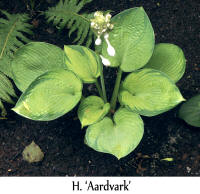 Shakespeare's Juliet
said, "What’s in a name? That which we call a rose
By any other name would smell as sweet...". Shakespeare's Juliet
said, "What’s in a name? That which we call a rose
By any other name would smell as sweet...".
Well, Mr PGC might
say, "What's in a name? That which we call
a hosta By many different names...smells rotten!"
For most of its
history, the genus, Hosta, has be rife with
confusion, changes and misunderstandings regarding
the names of species and cultivars. In the early days,
the genus was considered to be part of
Hemerocallis
(Daylily) probably
due to the lily like flowers and later it became
Funkia after a botanist, Heinrich
Funk. Finally, they settled on naming this leafy
plant after another
botanist,
Nicholas Host.
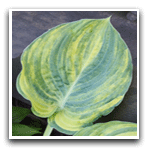 With all these
changes at the genus level, it is no wonder that
there was so much confusion in naming species and
cultivars. Fortunately, over the past few decades,
great strides have been made to make the naming of
hostas both systematic and understandable to the
average gardener. With all these
changes at the genus level, it is no wonder that
there was so much confusion in naming species and
cultivars. Fortunately, over the past few decades,
great strides have been made to make the naming of
hostas both systematic and understandable to the
average gardener.
Here are some topics
which may help you understand the ins and outs of
Hosta Registration:
|
|
|
 |
Even though there are 7038 registered hostas (as
of the end of 2018),
Mark Zilis estimates that there are another 3,000
to 4,000 or more
that are named but not registered with
The American Hosta Society. This situation
can lead to a lot of confusion when it comes to the
home gardener selecting plants for the landscape.
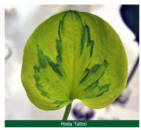 What commonly happens is person "A" and person
"B" each name a different plant and label it
something like H. 'PGC
Galore'. Person "A" is a friendly type and gives his/her plant
to several dozen people who label it and put it in
their gardens. Being nice people also, they begin
sharing the plant with their friends and relatives. Maybe the
local garden center likes the plant and starts to
sell a few hundred of them. So, in a couple of years, this
giant size, green leaf plant with yellow marginal variegation
bearing
the name H. 'PGC Galore' is spread all over the
place. What commonly happens is person "A" and person
"B" each name a different plant and label it
something like H. 'PGC
Galore'. Person "A" is a friendly type and gives his/her plant
to several dozen people who label it and put it in
their gardens. Being nice people also, they begin
sharing the plant with their friends and relatives. Maybe the
local garden center likes the plant and starts to
sell a few hundred of them. So, in a couple of years, this
giant size, green leaf plant with yellow marginal variegation
bearing
the name H. 'PGC Galore' is spread all over the
place.
In the meantime, "B" watches his blue-green
leafed, miniature size seedling with a white medial
(center) variegation grow in his/her garden for 5
years making sure that it is
stable as a mature
mound. Then, "B" completes the proper paper work to
register this hosta with the AHS. From that
moment on, the name H. 'PGC Galore' belongs to this plant and no
other. "A" has lost the opportunity to use that name
and all those giant size plants in gardens throughout America
are now incorrectly named and the source of confusion.
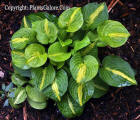 This problem gets even more messy when "A", "B"
and "C" each give three different names to what is
actually the exact same plant. Sometimes this is
just a coincidence but there are cases where people
have consciously renamed the same plant to take
advantage of profits to be made from its sale. Is it
any wonder why many
people have difficulty keeping all these cultivar
names straight? This problem gets even more messy when "A", "B"
and "C" each give three different names to what is
actually the exact same plant. Sometimes this is
just a coincidence but there are cases where people
have consciously renamed the same plant to take
advantage of profits to be made from its sale. Is it
any wonder why many
people have difficulty keeping all these cultivar
names straight?
To address these problems so that the gardening
public, plant hybridizers and commercial nurseries can be more
confident in the names on their plants, actions were
finally
taken by hosta enthusiasts i.e.
Hostaphiles.
|
|
 |
With the increased interest in hostas, there
became a need for an organization to promote
enjoyment of the plant and to cater to
the needs of hosta people. In response to this situation, The American Hosta Society
was created in 1968. At
the same time, the International Cultivar
Registration Authority for the Genus Hosta was established
and based at
the University of Minnesota Landscape Arboretum.
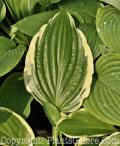 Mervin C. Eisel acted as the first Registrar and
in the fifteen years of his tenure, only 285 new
hosta cultivars were submitted for registration. He
was succeeded by
David Stevenson who served from
1992 to 2001 when the University of Minnesota
decided to stop supporting this service. At that
point, former
AHS president,
Dr. Jim Wilkins was appointed and served
through 2005 when another former AHS president,
Kevin P. Walek took on the job which he held
through 2015. Gayle Hartley Alley became the
Registrar in 2016. Mervin C. Eisel acted as the first Registrar and
in the fifteen years of his tenure, only 285 new
hosta cultivars were submitted for registration. He
was succeeded by
David Stevenson who served from
1992 to 2001 when the University of Minnesota
decided to stop supporting this service. At that
point, former
AHS president,
Dr. Jim Wilkins was appointed and served
through 2005 when another former AHS president,
Kevin P. Walek took on the job which he held
through 2015. Gayle Hartley Alley became the
Registrar in 2016.
Over this time, the number of hosta cultivars
being registered has climbed dramatically. As
mentioned, the first 15 years saw a total of 285 new
registrations but this rose to over 300 per year
during Jim Wilkins' tenure. As of the end of 2014,
Kevin Walek reported that there were
5,460 registered hosta cultivars. By the end of
2018, there are 7038 hostas listed on the
Hosta Treasury website.
|
 |
According to The American Hosta Society regarding the registration
process, "The goal is to eliminate confusion and to
compile as complete a record as possible of all
Hosta cultivars." In other words, the purpose
of having a registry is simply to gather detailed
information about all cultivars so that people can
more easily tell the difference between them when choosing hostas for their
landscapes or their hybridizing program.
A common
misconception is that registration is a type of
"approval" process where someone judges whether a
cultivar is worthy of being named and introduced
into the nursery trade. This is not the case. It is
not the registrar's role to determine if a cultivar
is truly unique from other hostas, has stabilized
variegation
or is an improvement to hostas that already exist.
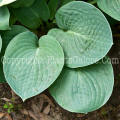 The
registrar's role is
to collect the proper information on the cultivar
and to determine if it is in conformance with the
rules of the International Code
of Botanical Nomenclature and the
International Code of
Nomenclature for Cultivated Plants. These
organizations have set up standards for what may be
used for names of plants and the format
which must be used. For example, if the hosta is to be named
for a person such as H. 'Mary Roe', the applicant
must get the written permission of Ms Roe or her
estate, if deceased. The
registrar's role is
to collect the proper information on the cultivar
and to determine if it is in conformance with the
rules of the International Code
of Botanical Nomenclature and the
International Code of
Nomenclature for Cultivated Plants. These
organizations have set up standards for what may be
used for names of plants and the format
which must be used. For example, if the hosta is to be named
for a person such as H. 'Mary Roe', the applicant
must get the written permission of Ms Roe or her
estate, if deceased.
To put a cultivar
forward for registration, you will need to fill out
a form describing the plant in detail, include
pictures that are representative of the plant and
(currently) a check for $5.00.
For the most up to
date information on this process, please take a look
at the
Hosta
Treasury website.
|
 |
 Of course, name problems in the plant world are
not exclusive to hostas. The botanists got together
long ago and created the
International Code of
Botanical Nomenclature (ICBN) to give rules on naming new
genera and species that were discovered in the wild. Of course, name problems in the plant world are
not exclusive to hostas. The botanists got together
long ago and created the
International Code of
Botanical Nomenclature (ICBN) to give rules on naming new
genera and species that were discovered in the wild.
|
 |
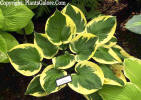 The ICBN was fine for newly discovered plants
from the wilds but
there eventually became a need to have separate rules
for naming those plants created under cultivation in
horticulture or agriculture. So, in 1952, the first
edition of the
International Code of Nomenclature
for Cultivated Plants (ICNCP) was issued. It has
gone through several revisions and new additions
over the years to help to formulate a unified system
for naming new cultivars of plants including hostas. The ICBN was fine for newly discovered plants
from the wilds but
there eventually became a need to have separate rules
for naming those plants created under cultivation in
horticulture or agriculture. So, in 1952, the first
edition of the
International Code of Nomenclature
for Cultivated Plants (ICNCP) was issued. It has
gone through several revisions and new additions
over the years to help to formulate a unified system
for naming new cultivars of plants including hostas.
|
|



